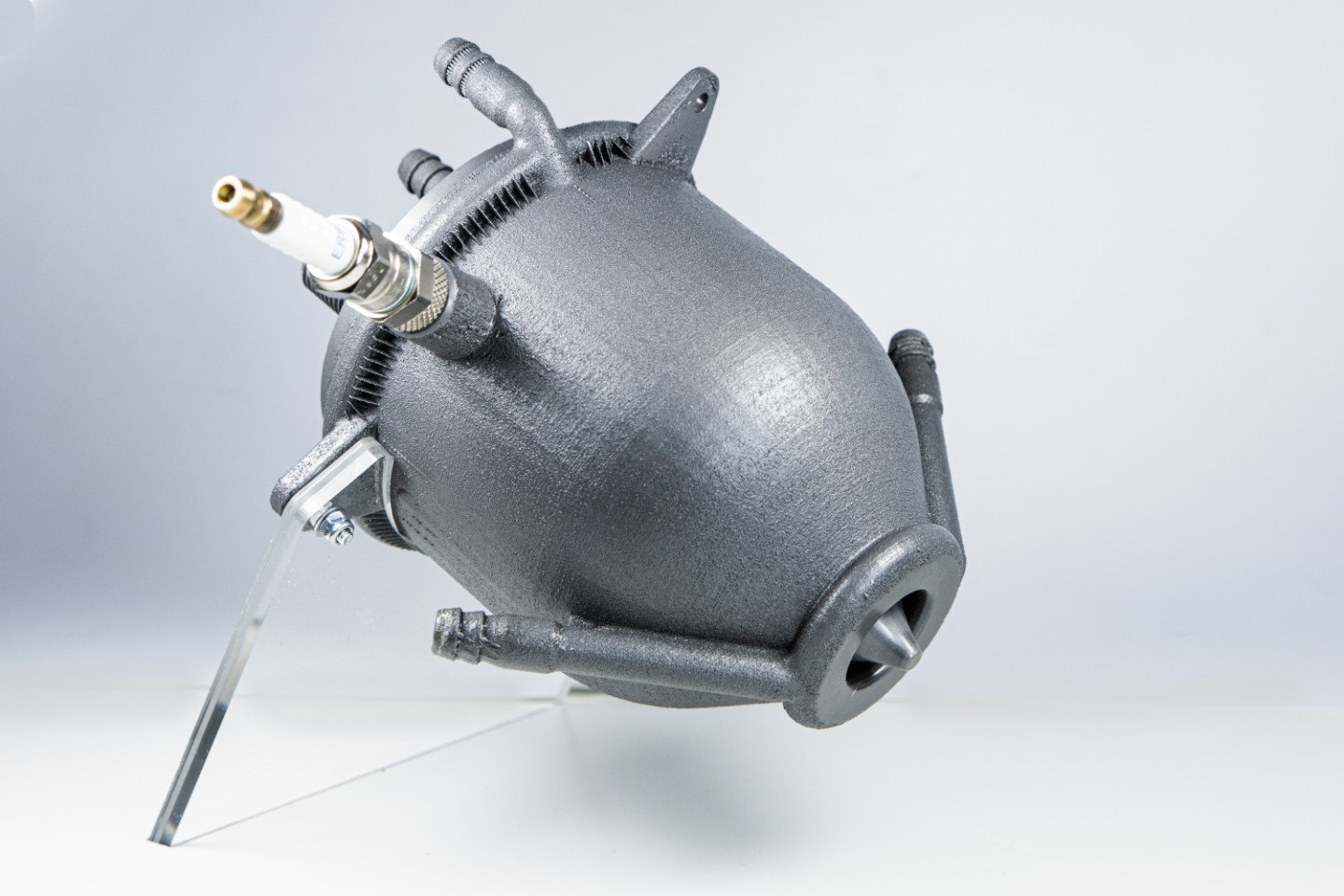
Researchers at the Fraunhofer Institute for Material and Beam Technology (IWS) and TU Dresden have developed a prototype 3D printed rocket engine featuring an aerospike nozzle for microlaunchers.
The nozzle consists of a spike-like center-body designed to accelerate combustion gases. Microlaunchers are reportedly an alternative to conventional launch vehicles that can launch small satellites up to 350 kilograms into space.
According to the institute, the fuel injector, combustion chamber and nozzle are printed layer by layer in a laser powder bed fusion (L-PBF) additive manufacturing (AM) process. Applied layer by layer, the powder is then melted. This selective laser melting gradually builds a component with one-millimeter-wide cooling channels that follow the combustion chamber’s contours. Residual powder in the channels is then vacuumed out.
‘We opted for an additive way of manufacturing the metal rocket because the engine requires very good cooling and needs internal cooling channels,’ said Mirko Riede, group manager 3D manufacturing at Fraunhofer IWS. ‘This complex regenerative cooling system with labyrinthine internal ducts cannot be milled or cast in conventional ways. This metal has to hold up to rigorous demands, remaining solid at high temperatures and conducting heat well to ensure optimum cooling.’
Fraunhofer says that the scaled metal prototype could consume 30% less fuel than conventional engines and be more compact that conventional systems. The aerospike nozzle developed by Fraunhofer IWS and TU Dresden better adapts to the changing pressure on the trip from Earth to orbit, according to the company.
‘The technology behind aerospike engines dates back to the 1960s,’ said Michael Müller, scientific assistant at the Additive Manufacturing Center Dresden (AMCD), which is jointly operated by Fraunhofer IWS and TU Dresden. ‘But our ability to produce engines as efficient as this is owed to the freedom brought by additive manufacturing and its embedding in conventional process chains.’
‘Every gram saved is worth its weight in gold in space flight because less fuel has to be taken into orbit,’ added Riede. ‘The heavier the overall system, the lighter its payload has to be.’
This story uses material from Fraunhofer, with editorial changes made by Materials Today. The views expressed in this article do not necessarily represent those of Elsevier.





